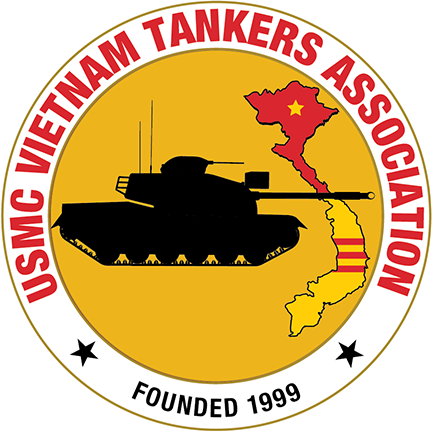VA Burial Benefits: The VA offers two different types of Burial Benefits when a Veteran passes away
VA Burial Benefits: The VA offers two different types of Burial Benefits when a Veteran passes away-
Service Connected Burial Benefit– If a Veteran passes away from a service connected condition or a presumptive condition that was not previously claimed, the VA will pay a one-time payment of $2,000.
Non-Service Connected Burial Benefit– If a Veteran is in receipt of a monetary award from the VA (VA Disability Compensation or Non-Service Connected Pension) or passes away at a VA Medical Center or VA Contract Care Facility while enrolled in VA Medical Care, the VA will pay a one-time payment of $300 and possibly reimburse the person who paid for the funeral the cost of transportation of remains from the place of death to the funeral home as long as the amount is broken out in the itemized funeral bill.
Plot Allowance– The VA will pay a $749 Plot Allowance for internment costs of the Veteran as long as the Veteran is eligible for receipt of service connected or non-service connected burial benefits. The VA will pay the $749 Plot Allowance to a State Veteran Cemetery for internment of a Veteran regardless of eligibility of the Service Connected or Non-Service Connected Benefit.
Survivor’s Benefits– There are two different Survivor Benefits that a Surviving Spouse/Child under 18 (or unmarried child enrolled in school under the age of 23)/or Adult Helpless Child of the Veteran may be eligible for:
Dependency Indemnity Compensation (DIC)– DIC is paid to an eligible spouse/dependent if the Veteran passed away from a service connected condition, a previously unclaimed presumptive condition, or from any condition if the Veteran was rated 100% (or Individual Unemployability) for 10 years or longer. Note- The Spouse had to be married to the Veteran for at least one year prior to the Veteran’s death and will lose the DIC award if they remarry before the age of 57. If they do remarry before age 57 and lose the DIC Award and that subsequent marriage ends in divorce or death, the Surviving Spouse may file for DIC again due to the Veteran’s passing.
– Basic DIC Rate is $1,257.95/Month
– If the Veteran was rated 100% (or I.U.) for 8+ years and married to the same spouse for at least 8 years, the Spouse will receive an additional $267.12/month
– If the Surviving Spouse is entitled to the Aid and Attendance Rate (Based upon the need of help with activities of daily living), the spouse will receive an additional $311.64/month.
** Note- If the Veteran was a DOD Retiree and paid into the DFAS Survivor Benefit Plan (SBP) (6% of the monthly retired pay which allows the Surviving Spouse to receive 55% of the Veteran’s Retired Pay at the time of their death) and also qualifies for DIC based upon a service connected cause of death, the current Federal Law does not permit payments of both SBP and DIC. The current Federal Law only allows the payment of the greater amount and possibly the SBP/DIC Offset which is currently $310/month.
Survivor’s Pension– This is the only other type of Survivor Benefit. To be eligible, the Veteran had to have wartime service, had to have at least 90 days of active duty service before 1980 or at least 2 years after 1980, been married to the surviving spouse for at least one year prior to the Veteran’s passing, and then meet the financial requirements of having less than $80k in assets (not to include the spouse’s primary residence). Assets include additional houses, excessive property, amounts in checking/savings accounts, IRAs, stocks, bonds, mutual funds, trusts, etc… If below the $80k threshold, the VA will determine the Pension Rate that the spouse would be eligible for. Once the rate is determined, the surviving spouse’s annual income- which includes all sources of income to include Social Security (which will be adjusted by subtracting recurring monthly medical costs) must be below the Maximum Annual Pension Rate for that specific level of Pension. Note- If a surviving Spouse remarries after the death of the Veteran, they will lose the Pension and can never claim it again regardless of what happens to the subsequent marriage.
– Basic Pension Rate– If the surviving spouse can live on their own and take care of themselves.
Maximum Annual Pension Rate is $8,656.00/year
– Housebound Rate– If the surviving spouse can live on their own and take care of themselves but are indoors all day and need help to leave their residence.
Maximum Annual Pension Rate is $10,580.00/year
– Aid and Attendance Rate– If the Surviving Spouse requires assistance from someone else to Take care of activities of daily living (Bathing, dressing, feeding, etc…) then the cost of Home Healthcare, Assisted Living or Skilled Nursing can be counted as recurring monthly medical Expenses. This is the only level that these costs will be counted as medical expenses.
Maximum Annual Pension Rate is $13,836.00/year
The VA will never pay above the Maximum Annual Pension Rate for the level that they qualify for. For example, if a spouse is entitled to pension at the A&A Rate and the cost of assisted living is more than his/her income, the VA will pay $13,836.00/year or $1,153.00/month.
